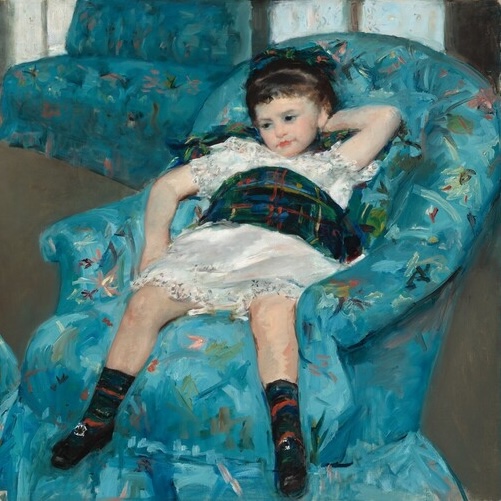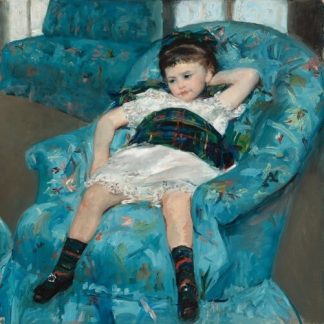More Info
Often dismissed as a sentimental painter of mothers and children, Mary Cassatt (1844–1926) was in fact a modernist pioneer. Her works were bold and pioneering, both in technique and subject matter, and her paintings, pastels, and prints are characterized by restless experimentation and change. Cassatt was the only American to join the French Impressionists, first exhibiting with the group in 1879 at the invitation of Edgar Degas, and she quickly emerged as a key member of the movement.
Cassatt produced many images of “women’s work” that highlighted the agency, intellect, and inner lives of women by showing them deeply engaged in their pursuits. And rather than showing children as miniature adults, she painted them as individuals with moods and personalities. For example, in the above painting, Cassatt captures a little girl in a moment of rest, sprawling across a chair. Is she tired from play? Has an adult told her to behave? Or is she bored? Whatever happened, her pouty expression and slouched body language suggest that she has her own opinions on the matter.
Cassatt experimented across a number of media — painting, pastel, and printmaking. Some of her greatest innovations came in printmaking. Over the course of her career, she produced approximately 380 pastels, 320 paintings, and 215 prints. A new exhibit at San Francisco’s Legion of Honor, Mary Cassatt at Work, calls attention to the artist’s own processes of making — how she used her brush, etching needle, pastel stick, and even fingertips to create radical art under the cover of “feminine” subject matter. The exhibition runs from October 5, 2024 – January 26, 2025.
William H. Fredlund, the Director of the Institute, obtained his B.A. and M.A. from UCLA, where he specialized in European history and art history. He studied in Italy on a Fulbright Fellowship and completed a double Ph.D. in history and humanities at Stanford, specializing in Renaissance Italy. Dr. Fredlund has taught for UCLA, the University of Florence, Stanford, and UCSC Extension.

